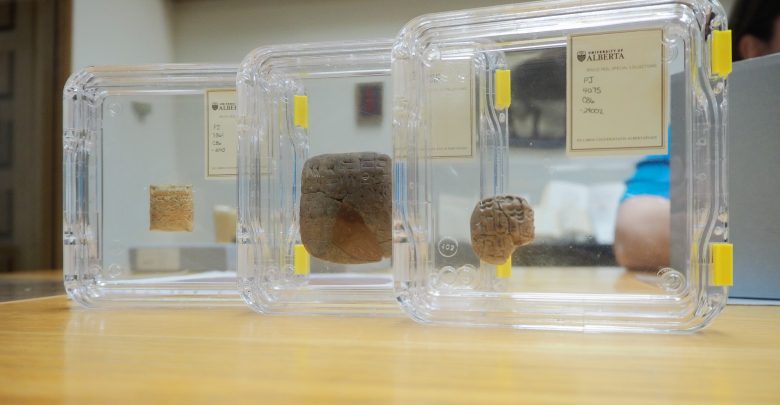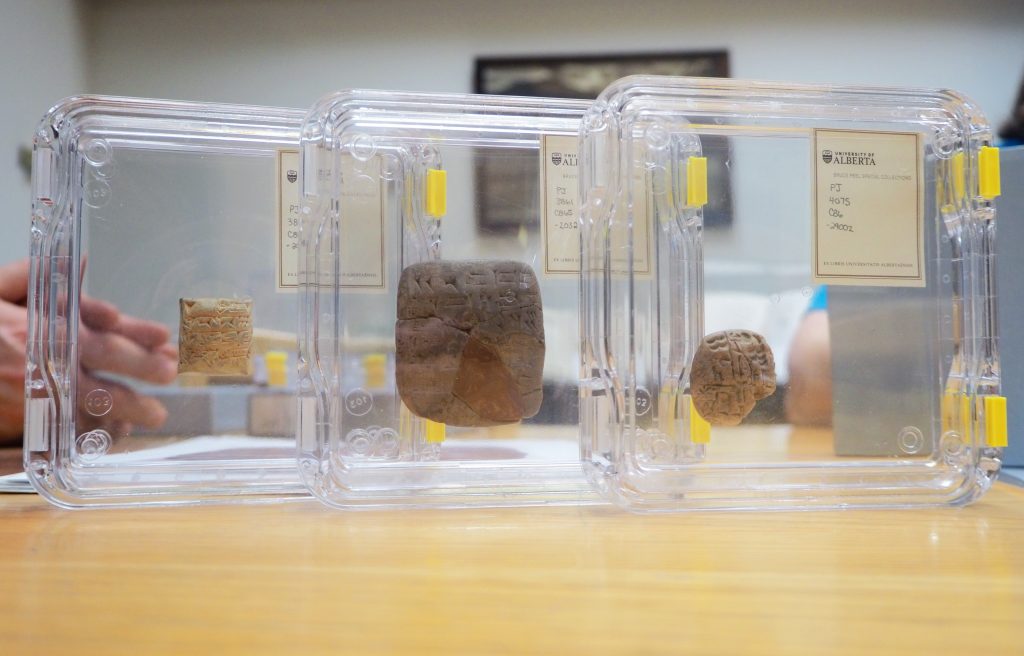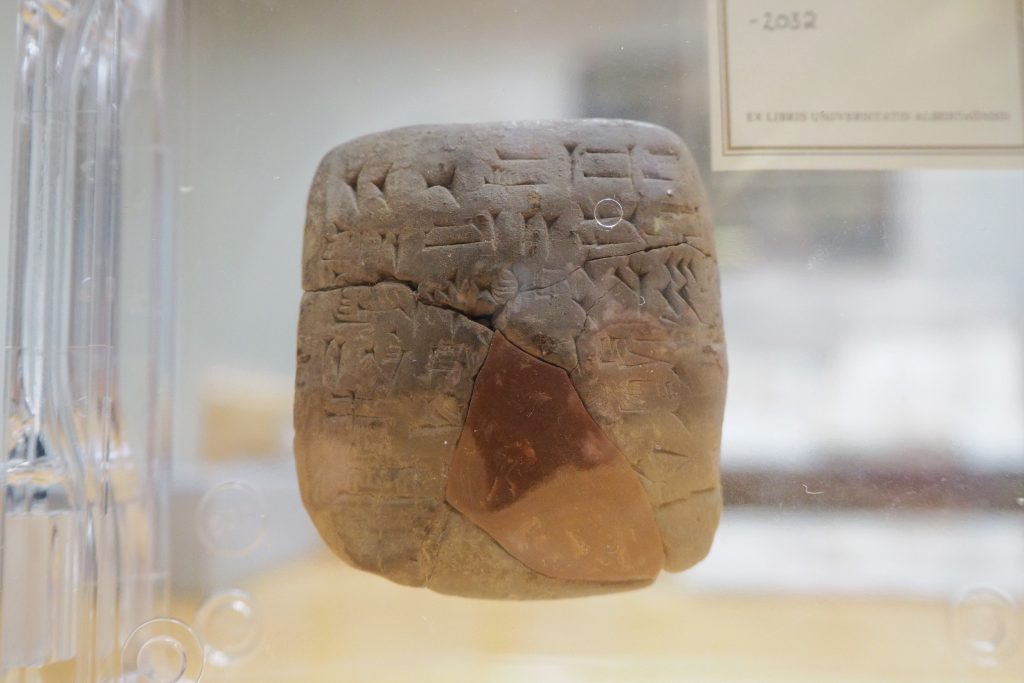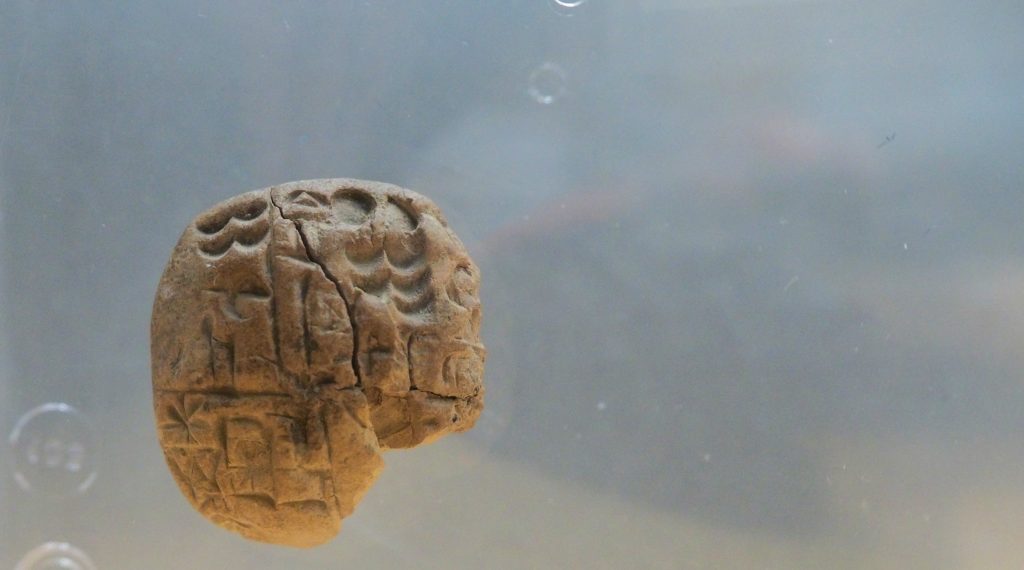 Helen Zhang
Helen ZhangThree years ago, the University of Alberta acquired the first of four ancient Mesopotamian cuneiform tablets, which together form the oldest items in the university’s entire library collection.
The tablets are kept in the university’s Bruce Peel Special Collections, located in the basement of Rutherford South. Named after Bruce Braden Peel, Chief Librarian of the University of Alberta from 1955 to 1982, the collection hosts over 100,000 rare books as well as an assembly of artifacts, including four Mesopotamian Cuneiform tablets ranging from 4,000 to 5,000 years old.
Cuneiform, baked clay incised with tiny script based on picture and symbols, is considered one of the oldest forms of writing in ancient Mesopotamia, which is now modern-day Iraq. The library paid between $2,000 to $3,000 per tablet.
The oldest two tablets date from 2900 BC to 2600 BC. The remaining two are from between 2032 BC to 2031 BC, and 2000 BC.
However, despite their age, the Cuneiform tablets themselves were not as expensive for the university in comparison to some of its other materials. Library assistant Jeff Papineau said this is mainly due the abundance of cuneiform tablets.
“The idea of the cuneiform tablets is that they are very plentiful in the world, there are very large collections in places like the British Museum where they have over 100,000 in items,” he said.“But most of them remain untranslated and from what I’ve read there are very few people that are actually qualified to actually give real translations of these things so the majority of them remain untranslated.”
Linda Quirk, a librarian at the Bruce Peel Special Collections, said the first tablet was purchased nearly three years ago when it came up for auction after being removed from a collection, from which it still bears a museum stamp.
The remaining three cuneiform tablets were purchased only a year ago. Quirk said part of the motivation for acquiring them was that they provided students with more information than the first as the remaining three tablets come with a small booklet containing a translation and general documentation done by a Yale professor.
In order to preserve the materials, the entire collection is temperature controlled at temperatures of 18C to 20C all year round. In the case of the cuneiform tablets, each is encased in its own plastic, acid-free container to preserve them. The containers had to be specially ordered for the tablets by full-time Peel Library conservator Carolyn Morgan. Students are able to visit the Peel Library and view its materials.
Quirk added that it is mainly through the help of the Peel Library’s donors that it is able to acquire such items.
“Some donors give us money some donors give us books. We also do get a small budget as part of an operating budget but really most of our purchases are through donation,” Quirk said.
The Cuneiform tablets and all other items in the Bruce Peel Special Collections are available for viewing and use in the supervised temperature controlled reading room. Visitors are encouraged to visit the Bruce Peel website and reserve their item at least 24 hours in advance.







